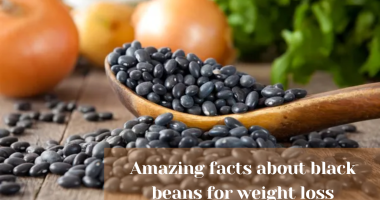The Interplay of Perceived Meal Sustainability and Healthiness – A recent study published in PLOS Sustainability and transformation investigated whether the public’s perception that sustainable meals are also healthier meals aligns with reality. The researchers also explored how meal characteristics and individual factors influence this perception.
Navigating the Crossroads of Health and Sustainability in Food Choices
In today’s world, striking a balance between health and sustainability has become a growing concern. Our dietary decisions are heavily influenced by our understanding of food’s nutritional components and their impact on our well-being.
While food sustainability encompasses various aspects, its ecological dimension is often perceived as the most pressing issue. However, there is a need for further research to determine whether this perception aligns with reality.
Individuals often employ the “healthy equals sustainable” heuristic when selecting their food choices. However, this perception may not accurately reflect the true healthiness and sustainability of a given food item.
Moreover, the influence of individual characteristics and meal attributes on this heuristic is not fully understood. Further investigation is required to elucidate how these factors shape food choice decisions in real-world settings.

Study Methodology
To address these knowledge gaps, researchers conducted a study in a university cafeteria in Germany, a popular dining spot among the university’s 11,000 students and 2,400 staff members.
During the survey period in February 2020, the cafeteria offered a diverse selection of four to five hot meals daily, covering various menu options. Meal prices were subsidized for students and varied depending on the menu line and customer status.
The survey encompassed six periods, featuring a total of 29 unique meals. After purchasing and consuming their meals, customers were provided with a paper questionnaire to complete.
Assessing Perceptions of Health and Sustainability in Meal Choices
Participants completed questionnaires upon finishing their meals, placing them on their trays. The questionnaire included six-point Likert scale ratings for both meal healthiness and sustainability. Additionally, it gathered demographic information such as gender, age, and eating habits.
Researchers utilized the standardized tool suite of the NAHGAST algorithm to compute each meal’s environmental sustainability and healthiness scores. These scores were derived from ingredient type, preparation method, and environmental sustainability considerations.
Mixed linear regression models were employed to examine the relationship between mean and self-perceived meal characteristics among individuals consuming mixed meals. Meals represented the second-level units, while participants constituted the first-level unit.
The study verified assumptions like normality, linearity, and the absence of strong correlations among independent variables. Outliers were excluded, and data was group-mean centered or grand-mean centered as appropriate.
Initial analyses revealed a significant proportion of variance in perceived healthiness between meals, justifying the multilevel structure of the data. The models analyzed the correlation between perceived sustainability and healthiness, the effect of the discrepancy between actual healthiness and sustainability scores, the impact of meal characteristics such as content and nutritional indicators, and the influence of individual characteristics like gender, age, and eating style.
In essence, the research investigated the interaction of real and perceived features of meals in relation to sustainable and healthy dietary intakes among specific populations.
Study Findings
The present study demonstrated a positive correlation between people’s perceptions of meal sustainability and their views on healthiness.
Furthermore, it was indicated that meal sustainability influenced the subjective assessment of meal health regardless of healthiness or environmental burden. This trend was consistent across most meals, suggesting that people generally assume that sustainable food is also healthy.
The study also explored how personal characteristics shape these perceptions. Factors like gender, age, and different eating habits (such as vegan, vegetarian, gluten-free, lactose-free, following energy-limited diets, among others) were analyzed to see how they influence people’s views on the healthiness and sustainability of meals.
Interestingly, while there were effects of perceived sustainability and certain eating styles (like vegetarianism) on how healthy meals were perceived, the interactions between these characteristics and perceived sustainability did not significantly impact.
This suggests that the connection between perceived healthiness and sustainability remains consistent across groups.
Age was one exception to this pattern. Older participants demonstrated a slightly stronger association between perceived sustainability and healthiness than younger participants, suggesting that age may influence reliance on the “healthy = sustainable” heuristic. However, other individual characteristics, such as gender and specific eating styles, did not significantly alter this relationship.
The study further investigated whether actual meal characteristics influenced this perception. The researchers considered actual meal healthiness, environmental sustainability, and whether the meal was plant-based or contained animal products.
They found that while plant-based meals were generally perceived as healthier than those with animal-based content, these actual meal characteristics did not significantly influence the “healthy = sustainable” association.
Conclusion
Lastly, the study revealed a strong and consistent association between perceived sustainability and health across various meals and demographic groups.
This association did not align with the actual healthiness and sustainability of the meals, indicating that consumers tend to use a heuristic approach when evaluating meal options.
The findings suggest that this heuristic is deeply ingrained and operates independently of actual meal characteristics or individual differences in demographics and eating styles.
Continue to check our website soundhealthandlastingwealth.com for more articles of this kind. And, please use our comment section as well, we would love to hear from you.










